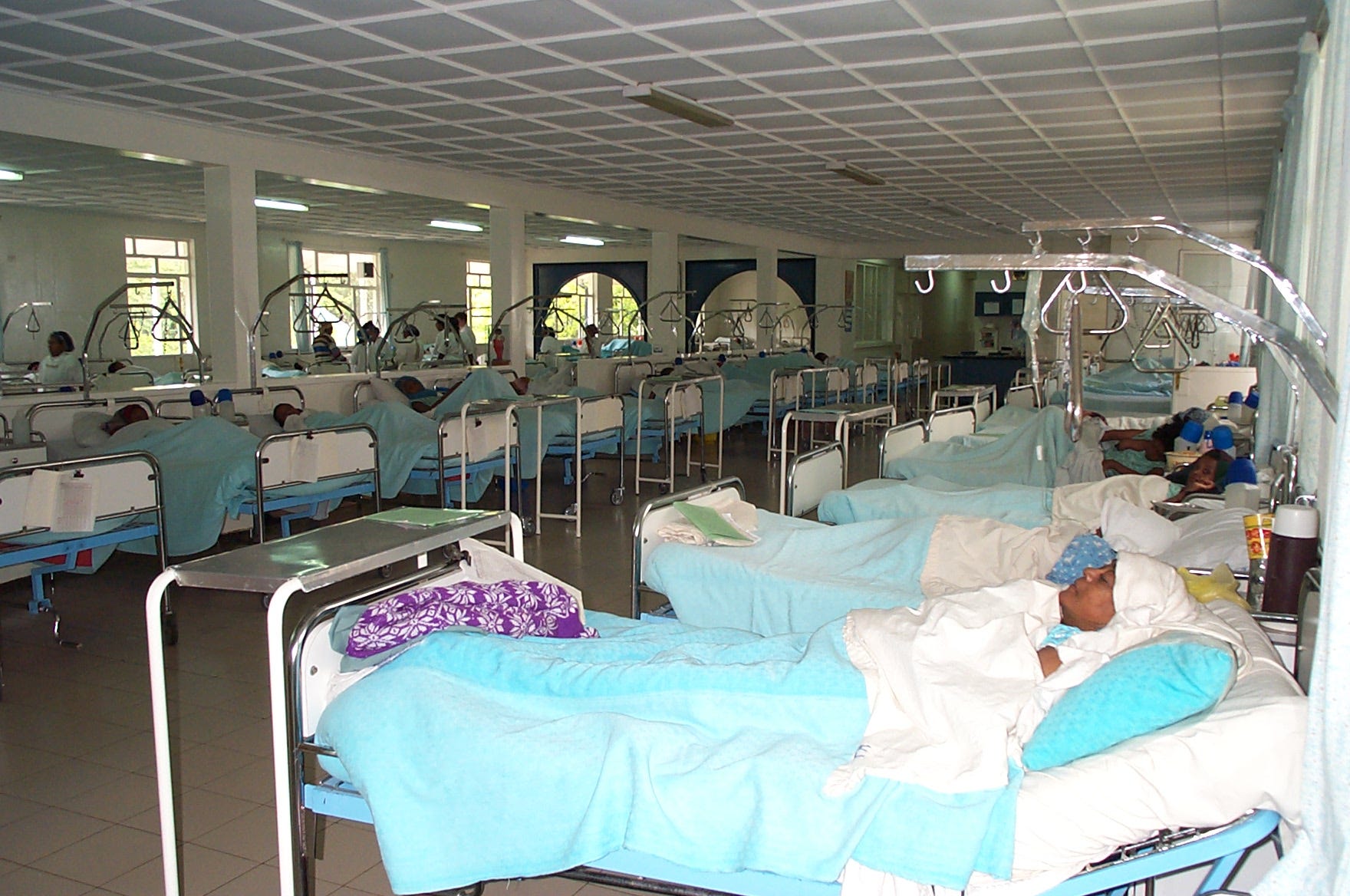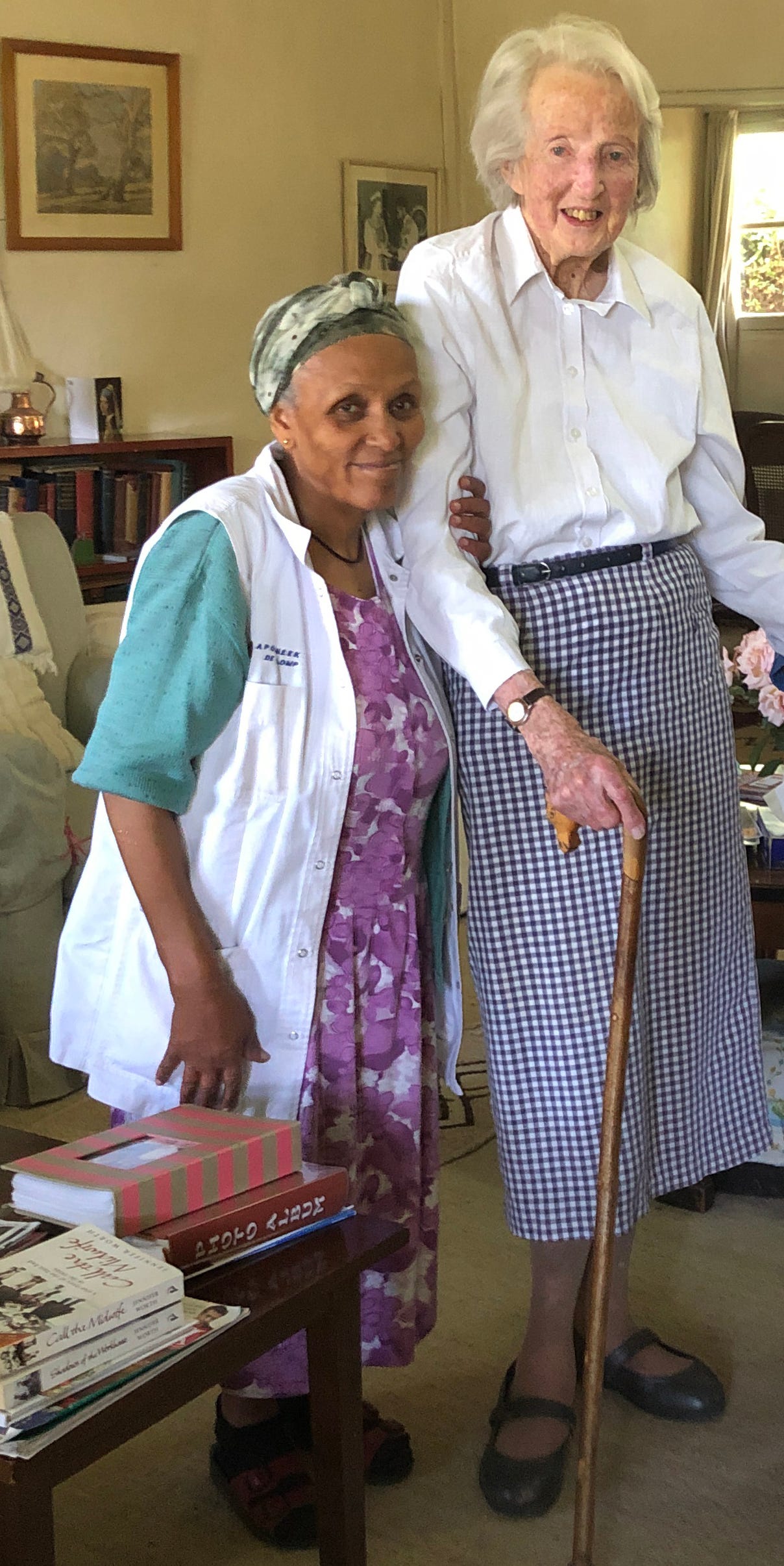Dr. Catherine Hamlin: the Humble Mother of Fistula Treatment
Originally published on Medium.com on May 22, 2019
“She inspired so many people like me to lend our energies to the fight she began so courageously and selflessly 60 years ago.”
On a sweltering summer day in 1994, I took a short cab ride that changed my life. My destination was the Fistula Hospital in Addis Ababa, Ethiopia. I was in Ethiopia with a “Co-Del” — short for Congressional Delegation — as a member of the US House Foreign Affairs Committee staff. Since my job included oversight of health programs, and I was the only woman on the delegation, embassy staff suggested that I visit the Fistula Hospital. “It’s a women’s hospital; you’ll find it interesting,” I was told.
As the cab snaked its way through the chaotic Addis traffic, I pondered the word Fistula. It meant nothing to me. I remembered that Italy occupied Ethiopia in the 1930s, and I wondered if fistula was a proper name — if there was a “Mario Fistula” or some other Italian who may have endowed the place. But, as the car came to a stop and I walked into a cavernous entrance with the unmistakable smell of disinfectant, I was greeted by the Hospital’s co-founder, Dr. Catherine Hamlin. At nearly six feet tall, she towered over me and just about everyone around her. Before I could expose my utter ignorance about fistula, she kindly explained in a lilting voice with a crisp accent from her native Australia: “Dear, a fistula is a hole between an internal organ and the outside world that shouldn’t exist.” She paused, then continued. “And in the case of all the women here, the cause is unrelieved obstructed labor, the hole is between the bladder, vagina, and sometimes the rectum, leaving a woman incontinent. Surgery is their only hope.” Ok. Got it.
We sat down on a set of chairs near the main ward and she began to explain how she’d come to Ethiopia back in 1959 with her late husband, Reginald (aka ‘Reg’). Both were young doctors, expecting to stay only a few years. But the plight of the fistula patients inspired her and Reg to raise money over a decade to build the hospital that opened in 1974 — the first hospital in the world dedicated to treating obstetric fistula. Dr. Hamlin said that she and Reg had sought out long-forgotten medical text books from Europe to develop treatment techniques for fistula, an injury largely eradicated with C-section deliveries in so-called ‘first world’ countries.

As Dr. Hamlin showed me around, I was struck by the immensity of the ‘Florence Nightingale’ ward, with tens of beds of women, one right next to the other. Each was suffering from an injury I had learned of less than an hour earlier: obstetric fistula. Some of the women were older, but most seemed quite young, and several called Dr. Hamlin “Mother”. When I asked her about that, she seemed embarrassed, but one of the nurses explained it was because of the patients’ reverence for her and gratitude for the loving care she gave them.
As we walked back to our seats, she said tenderly, “they’ve often been abandoned and shunned by their husbands and families, horribly injured simply for trying to bring a child into the world.” She stopped and turned to me, looking in my eyes and said “there are so very many of them — they will break your heart.” What I remember most is the compassion in her voice, and the gentle warmth of her eyes. She so very clearly loved the women she had dedicated her life to treating. I felt my eyes tearing up and a giant lump in my throat. I wanted to cry. But, it wasn’t because I was sad. I was simply overwhelmed by what was in front of me, surely one of the most caring human beings I had ever met, against a backdrop of women whose lives would be transformed because of her.

Thankfully, as we sat back down, Dr. Hamlin’s black dog began nipping at my heels trying to play. It made me laugh and the threat of tears passed. We talked more about her work and her constant need to raise funds to keep the place going, but soon it was time to go. As I walked back out into the blazing Ethiopian sun, I wished I had money to write a big check. At that point what I had was residual debt from grad school, and a 10 year-old Honda. But, in the crazy way the world works sometimes, I’ve been blessed with a job the last 14 years that enables me to try to harness hearts, minds and wallets to fight fistula.
Without Dr. Hamlin, and the inspiration she gave me 25 years ago, I am certain I wouldn’t be doing what I’m doing now. And, what I know for sure is that the entire field of fistula treatment in many ways stands on the shoulders of this humble giant and her late husband Reginald. They pioneered fistula treatment surgery decades ago, when far too few people cared about the abject suffering of poor women whose lives had been devastated simply for trying to deliver a baby.
The Fistula Hospital, now named Hamlin Fistula Ethiopia, has treated more women with fistula than any hospital in the world. They’ve also trained a generation of fistula surgeons; many of the best surgeons practicing in Africa and Asia got their training at the literal hands of Catherine and Reg Hamlin. So, today, as we commemorate the International Day to End Obstetric Fistula, I think it’s important to remember the mother of this movement, Dr. Catherine Hamlin.
Earlier this month, I returned to Addis and had the distinct pleasure of visiting Dr. Hamlin at her home on the grounds of her famed hospital. Now a frail 95, she is cared for by Mamitu, a former fistula patient she treated more than a half century ago, who has stayed at the hospital, and even trained to perform surgery. It was love in action watching Mamitu tend to Dr. Hamlin as a daughter would.

I’d come because I wanted to tell Dr. Hamlin something I find important: without her, the organization I run, Fistula Foundation, would not exist. While for the last decade Fistula Foundation has been focused on fighting fistula globally, now supporting more surgeries than any other organization in the world, and Hamlin Ethiopia has inspired fundraising organizations of its own in seven countries ably supporting the hospital’s work, Fistula Foundation was founded initially to support her work. Without her, there would be no Fistula Foundation. The 40,000 women and counting in more than 30 countries whose fistula surgeries we’ve funded, we wouldn’t have helped. She inspired so many people like me to lend our energies to the fight she began so courageously and selflessly 60 years ago.
After tea and biscuits, as I got ready to leave, I looked into her sparkling eyes and told her she had profoundly changed the course of my life and thanked her from the bottom of my heart. Always humble, she tried to graciously rebuff my words, but her smile seemed to widen slightly when I persisted saying that I meant every word and more. Now it was her eyes along with mine that welled with tears. She insisted on walking me out, and with Mamitu helping her stand, she kindly kissed me on the cheek. What I am left with is an indelible memory of her gentle face and warm eyes radiating the same nearly divine love for the world that changed my life 25 years ago.
